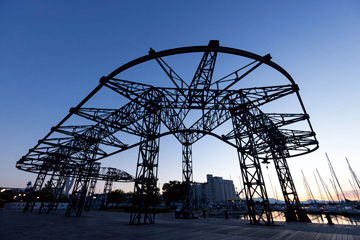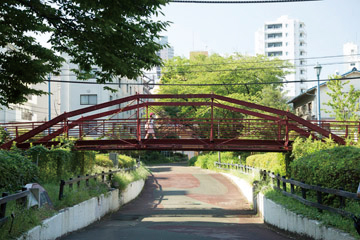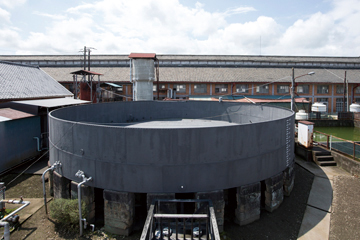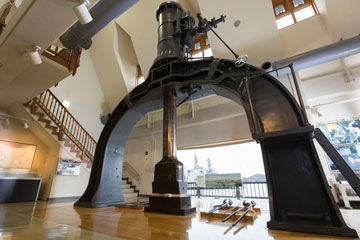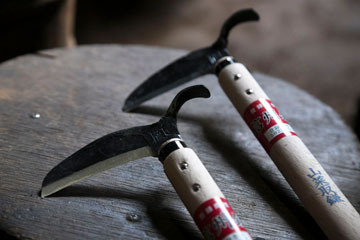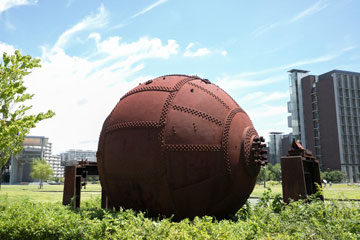2021 METAL CULTURE Shizuoka
The Port of Shimizu’s Iconic Telpher Crane
Value One Summer 2021 No.73
-
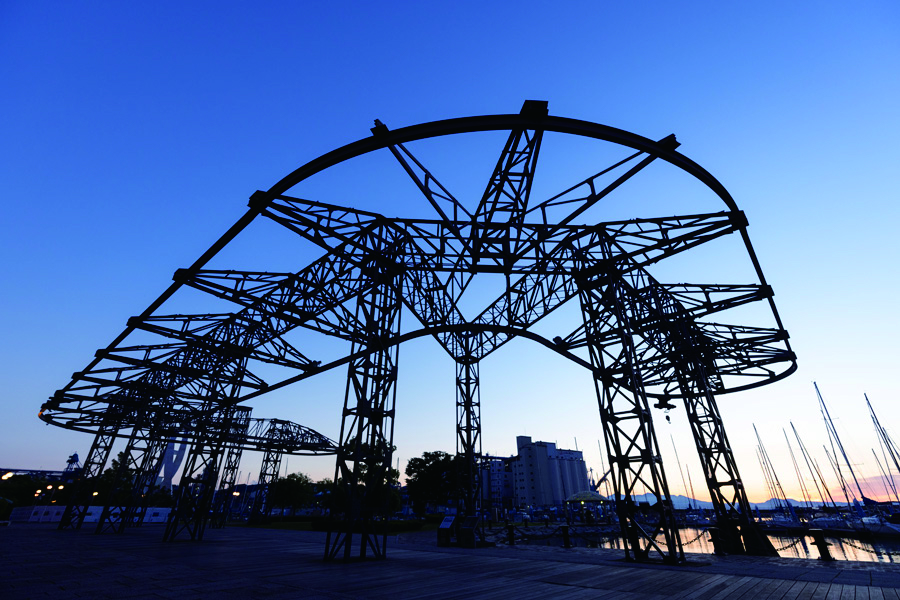
- The Port of Shimizu’s telpher crane, preserved in a public space adjacent to a shopping mall
Part of the Mechanical Engineering Heritage That Drove the Port of Shimizu’s Development
The Port of Shimizu is considered one of Japan’s three most beautiful, along with the ports in Kobe and Nagasaki. With a view of Mount Fuji and ringed by the pine groves of Miho no Matsubara, this harbor is also famed as a leisure spot, featuring a shopping mall and manmade beach. One section of the harbor has an unusual steel structure called a telpher crane.
-
When the Port of Shimizu opened in 1899, its main purpose was to handle shipments of tea bound for overseas. During the Taisho Era (1912–26), however, imports of Siberian lumber surged. Coupled with the rise in demand for lumber following the Great Kanto Earthquake in 1923, Shimizu became one of Japan’s leading seaports for imported lumber. A rail station was also built to transport materials that entered the port to the rest of Japan. The telpher crane brought the revolutionary efficiency needed to handle this rapid increase in cargo.
The telpher crane’s mechanism incorporated an electrical hoist trolley that moved along a steel I-beam rail to transport loads. Completed in 1928, Shimizu’s telpher crane was a eleven-meter-high steel truss structure. Viewed from above, the entire structure is U-shaped. The trolley was equipped with an operator’s cab that traveled in a loop along the outside rail. Lumber transported from offshore was hoisted from the sea and loaded onto freight cars. According to a newspaper article from that time, conveyors were used before that to load lumber at the port, at a rate of just one freight car per day at best. The new telpher crane could load a freight car in just 48 minutes— an astonishing leap in performance. -
-

- The telpher crane played an essential role in bringing Siberian lumber ashore
(from Shimizuko Kaiko Hyakunenshi, 100 Years of History from the Port of Shimizu’s Opening)
-
The same type of telpher crane was installed at six rail stations around Japan, including Nagoyako and Umikanagawa. The telpher crane in Shimizu is the only one that still exists, however. The Japan Society of Mechanical Engineers registered it in 2014 as part of Japan’s mechanical engineering heritage.
Shoji Ishida, formerly an instructor at Nagoya University of the Arts, took part in the historical research. “The Port of Shimizu’s modernization began with the telpher crane,” he says. “Our mechanical engineering heritage is the cornerstone of our contemporary affluent lifestyle.”

